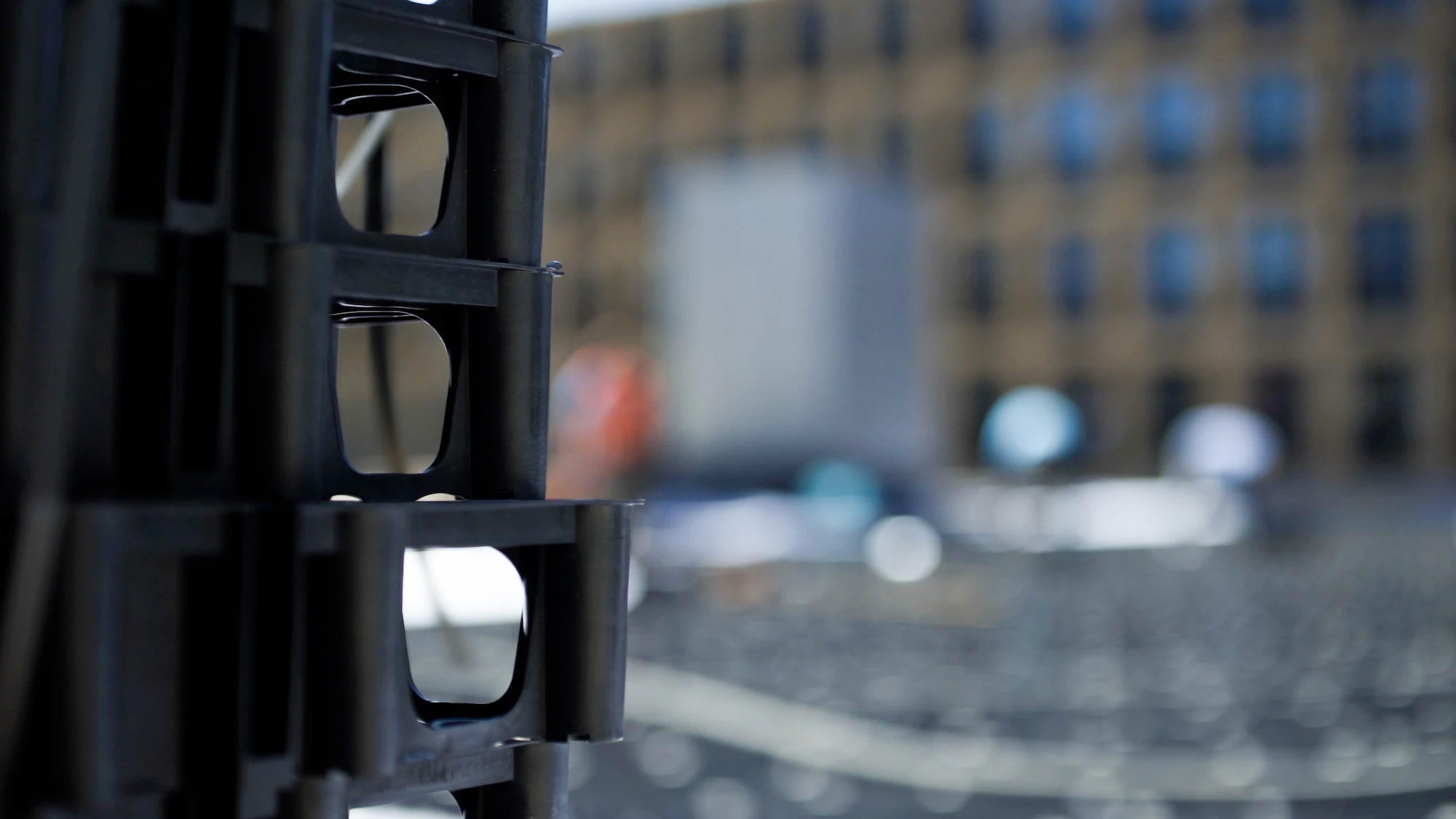Civils
Sustainable urban drainage design.

Solutions for subbase replacement
In the past a car park could just be a car park, however nowadays its design has to incorporate stormwater management, protect water quality and facilitate urban cooling by supporting surrounding green infrastructure.
The growing demand for a multifunctional layered city in urban planning creates new levels of complexity in civil engineering. For over twenty years Permavoid has been on the forefront of innovating, developing, testing and building solutions in civil engineering. By incorporating multifunctiple functions in reliable subbase solutions, any paved area can be put to work for the city.
By reintegrating on-site water management in urban planning cities become more resilient and are able to absorb the effects of changing weather patterns, preventing economic and ecological damage while protecting human health and well-being.


From lineair to circular approach.
The core behind Permavoid as subbase replacement is to create a shallow, but widely usable void high in the profile, as close to the surface as structurally possible. Permavoid's high compressive strength allows for placement close to the surface, creating the advantage of shallow excavation and minimal subgrade disruptions like rocky subgrades, groundwater, utilities and tree roots. In addition, minimal material transportation during construction. A typical detail for car parking starts with a 130mm buildup of pavement and bedding on top of Permavoid, up to a total buildup of 400mm for HGV accessible roads.



Strong benefits within civil.
Even though engineered infrastructure remains hidden in trafficked and paved designs to most users, structural integrity and reliability are essential for all Permavoid solutions. Permavoid provides a volumetric water storage capacity of 92% by replacing the traditional subbase layer with a structural void. This equates to a standard Permavoid module of 150mm deep, holding 138mm of water over the entire area: equivalent to a massive 1.38 million litres per hectare. Water can be retained and made available as a useful resource to recharge groundwater, maintain moisture content of soils, washdowns, cool the environment through evaporation or even generate potable water. Water retention for reuse not only saves drinking water, it doubles in functionality by keeping rainwater out of the often overloaded sewer systems.
Permavoid's fully tested, reliable high strength subbase replacement systems can be integrated with Sustainable urban Drainage Designs - SuDS. In combination with a water permeable geotextile, on-site water attenuation for infiltration is created under the hardscape. With our waterproof membrane a combined water retention system is created and in combination with the Permavoid treatment textiles oils and other hydrocarbons can be separated.
.webp)
Creating an actual water level in the Permavoid units in the subbase allows for full water management. The actual amount of water storage can be measured with sensor technology by our partner Rainup PRO. Incoming and outgoing flows can be controlled, water can be redirected to other systems for reuse and water can be added from other sources, for example to keep the Permavoid capillary irrigation system operational.

The core behind Permavoid as subbase replacement is to create a shallow-but-wide usable void high in the profile, as close to the surface as structurally possible. Permavoid's high compressive strength allows for placement close to the surface. In addition, creating a void over the entire surface enables the system to act as a catchment for the entire paved surface with ample attenuation volume. Retaining water high in the profile also maintains the gravity fed water conveyance potential.

Sloping areas can be split up into smaller flat areas, each passively cascading into the lower next level in a controlled manner. These individual small water managed areas are known as micro-catchments. The Permavoid system can attenuate water on almost any given gradient by implementing this cascading philosophy.

Get inspired by these projects





